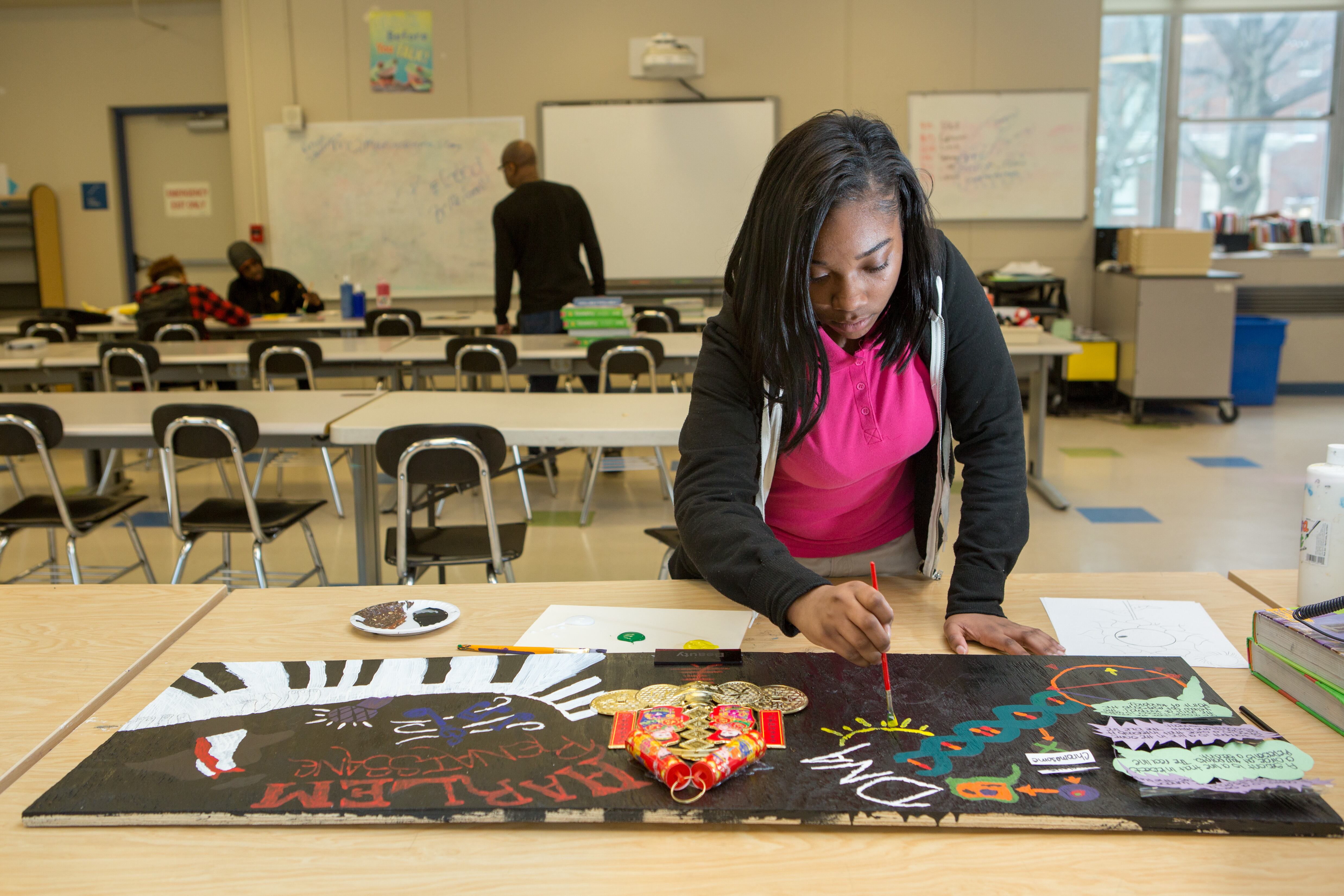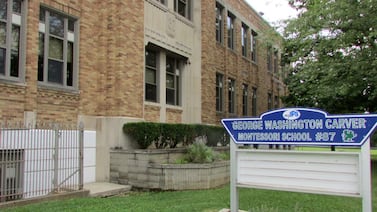The Aurora school district, one of the most diverse in the state, named its new arts-focused magnet school after Charles Burrell, who was the first Black musician to join a major symphony orchestra.
Now, the principals who will oversee the Charles Burrell Visual and Performing Arts Campus are working hard to live up to that name and build a program that provides opportunities for all students with a passion for the arts. Shawn Graziani will run the K-8 program and Mehran Ahmed of Aurora Central High will host the high school program.
In other districts and around the country, magnet programs have sometimes increased inequality and segregation within schools and districts, with wealthier families able to provide opportunities outside of school that give their children an edge in accessing specialized programming.
At Burrell, school leaders aren’t looking for formal training. Graziani said he’s interested in the students who may be falling behind in class because they spend their time in the back of the classroom drawing, or those who spend their free time choreographing a dance for their social media.
“They have interest and passion but it hasn’t necessarily been developed,” Graziani said.
At Central, Ahmed created a “Coherence Council” to give students a key role in planning the changes, with the additional challenge of not letting students feel like the high school has split into two — those focusing on arts, and those who are in the traditional programs.
“We really wanted to create some unity — a bridge between the pathway and the comprehensive space,” Ahmed said.
Students have provided input on the dress code and class schedules and even interviewed teacher candidates.
“The administrators, they really care about our voices,” said sophomore Sharmaine White. “They’re confident in us.”
In addition to Burrell, Aurora also is opening this fall the Clara Brown Entrepreneurial Academy. Principals have been assigned this school year to plan.
The new arts magnet program will include a K-8 school at the former Peoria Elementary School, next to the Aurora Central campus. The high school will continue to be a traditional neighborhood school, but also will host students who want to continue an arts-integrated program in high school. A district building in the same area is being renovated to eventually be part of the campus, too.
The high school program is still enrolling ninth graders for next year. Additional applicants for the opening grades will be put on a wait list.
The magnet schools are one piece of Aurora Public Schools’ long-term Blueprint APS plan to deal with shifting enrollment patterns.
Based on surveys and focus groups conducted early in the creation of Blueprint, the district concluded that families in Aurora were interested in having choices for specialized learning. Superintendent Rico Munn wanted to create district-run magnet schools to provide those choices instead of leaving it to charter schools that some feared would harm the district’s enrollment.
Blueprint divided the district into seven regions, and each will have a magnet school with a different focus.
While the school closures proposed under Blueprint have caused the most controversy, magnet schools also have given some board members pause in previous years. They’ve drilled Munn with questions about how magnet schools would be designed to be equitable — true options for all Aurora students. They asked how students would be selected and whether the district would provide transportation so students can enroll in magnet schools outside their home region.
Now, as the opening of the first two magnet schools approaches, many more details are available.
Ahmed and Graziani said equity has informed every decision they’ve made.
For instance, to include students who may not have had access to private lessons or summer camps, elementary students don’t have to audition. When more students apply than there is space for, as already happened, the school held an automated lottery to select admitted students. Older students, who had to interview, need to show their interest in the arts, not a developed skill.
Magnet schools, along with some other school choice policies that allow parents to pick schools outside their neighborhood, are sometimes found to contribute to more segregated schools. For example, 35% of students at Denver School of the Arts are students of color, compared to 75% of Denver Public Schools students. But because schools’ admission policies and practices can vary, so does research.
One study published in 2017 found evidence that white families are far more likely to gentrify communities of color when school choice options expand, including through magnet schools. It means they can move in without sending their children to the local school.
A report published in 2021 by the nonprofit Learning Policy Institute, identified key components of magnet schools that successfully become diverse schools with higher student achievement. Those included a focus on integration in every aspect of designing the magnet program, intentional and ongoing family outreach and engagement, inclusive enrollment practices, and free transportation.
Aurora district officials say that starting this fall, they plan to offer transportation for all students who live outside walking distance from their magnet programs.
The principals also have thought about having diverse adults in the buildings. Each school has been building partnerships with community organizations. The K-8 arts school, for instance, will work with a group that will provide practicing artists to help teachers design and deliver lessons. At the high school, Ahmed is working with Colorado Youth on Record to integrate their social justice curriculum with learning about music.
And, teachers who wanted to apply had to submit videos in which they talked about their definition of equity. Central students who were part of the interview process asked prospective teachers about how they set up their classrooms and how they support their students.
So far, Graziani and Ahmed said the students already signed up for the magnet program are diverse. About 30% of the K-8 who signed up come from the school’s northwest Aurora neighborhoods, while other students come from all over the district and even some from outside Aurora.
“The amount of interest we’ve had has just proven this was a school that needed to happen,” Graziani said.
Correction: This story has been updated to reflect that Aurora plans to offer transportation to magnet programs starting this fall.
Yesenia Robles is a reporter for Chalkbeat Colorado covering K-12 school districts and multilingual education. Contact Yesenia at yrobles@chalkbeat.org.







